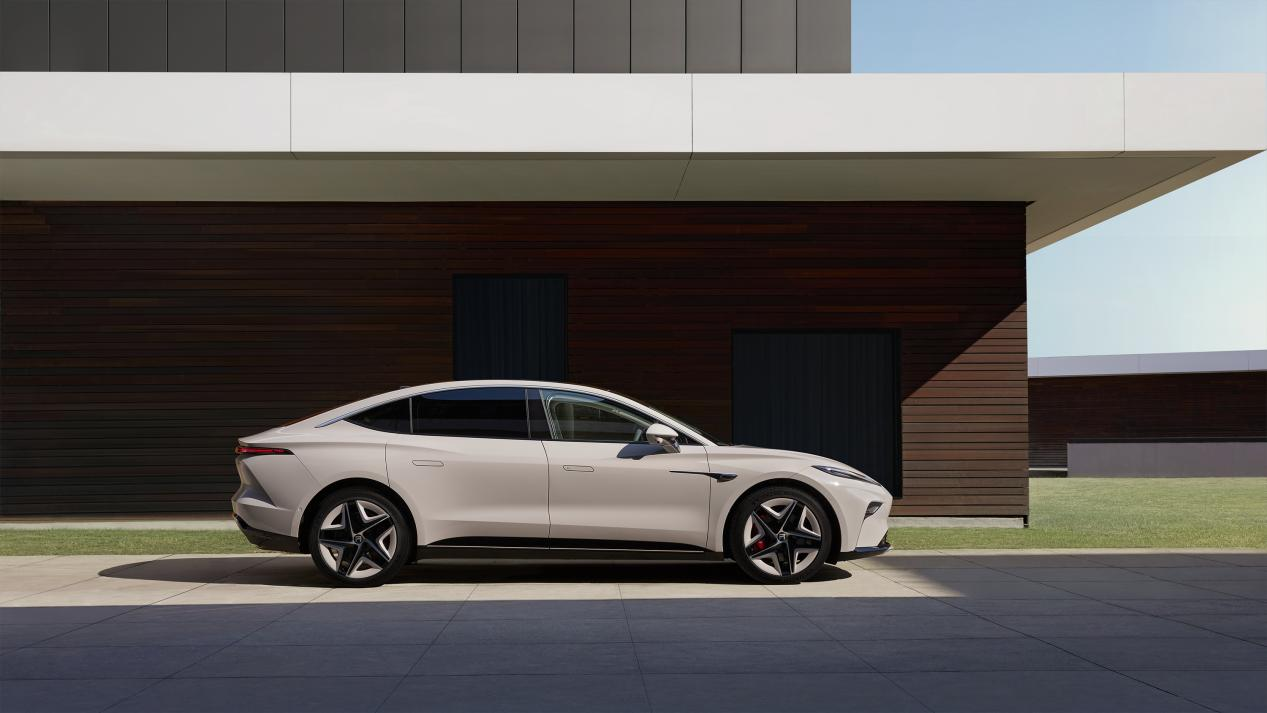Since the release of the FEIFAN R7, the already fierce competition in the large SUV market in the 300,000 RMB price range has become even more intense. With its comfortable driving experience, interior configurations that rival or even surpass those of competitors in its class, the R7 has become a strong player in the market. Recently, the R7 has adjusted its price, and with the option of separating the car and battery, its starting price has dropped below 200,000 RMB, which is truly impressive.
Now, FEIFAN’s second new car after the brand’s update, the FEIFAN F7, has been officially unveiled. Will it once again surprise us? Will it further intensify competition in the mid-sized car market? Let’s take a look at its appearance.
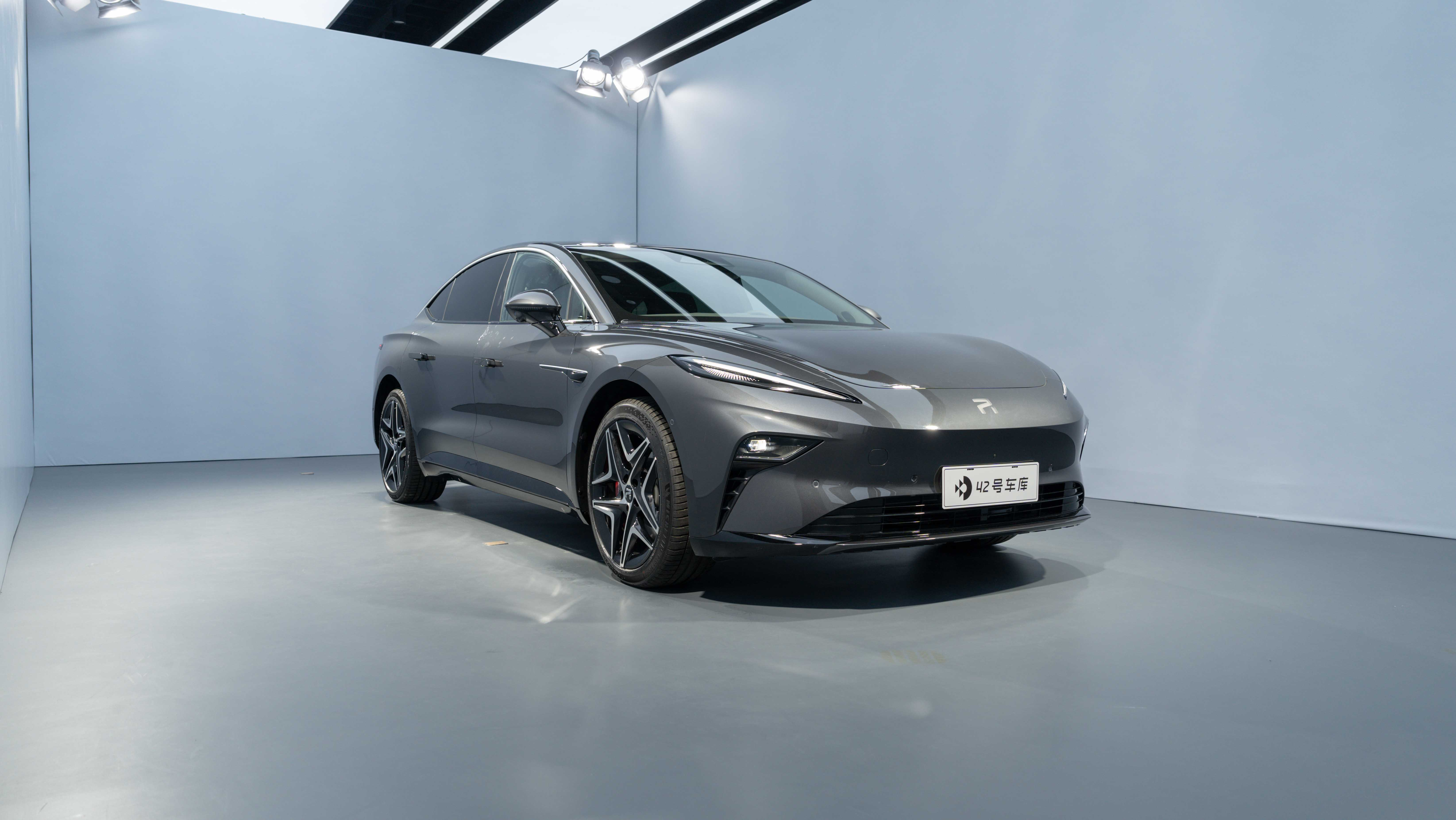
Exterior and Interior
Exterior: A Family Style with New Elements
Seeing the front of the FEIFAN F7, many people will probably comment “why does it look so much like XXX?” In fact, the design of the F7’s exterior is derived from the AUIA concept car that won the Red Dot Design Award in 2020, so many elements of the design are retained.

The front of the car is composed of three parts: daytime running lights, headlights, and a through-flow guide.

Unlike the R7’s through-flow design, the daytime running lights of the F7 use a separate design. Although it looks like the “narrow-eyes” design at first glance, a closer look will reveal a small feather-like highlight beneath, resembling a tiny eyelash.


The true through-flow guide is located below. It is worth mentioning that the FEIFAN F7 has a wind resistance coefficient of an exaggerated 0.206 Cd according to tests from SAIC Motor, which the official website claims is the third-lowest among current mass-market vehicles, and even lower than that of its sibling, the ZHIJI L7, which has a 0.21 Cd.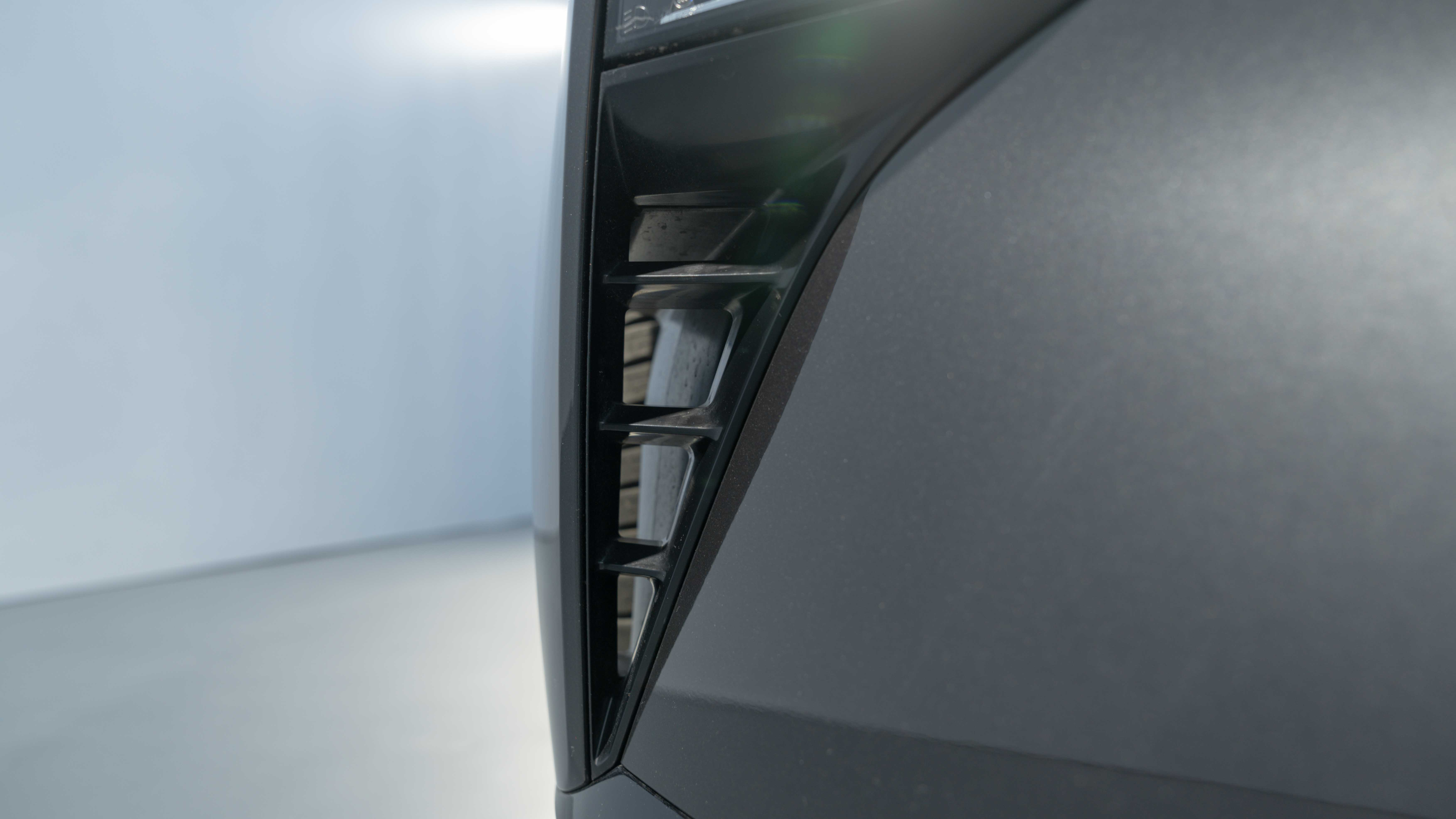
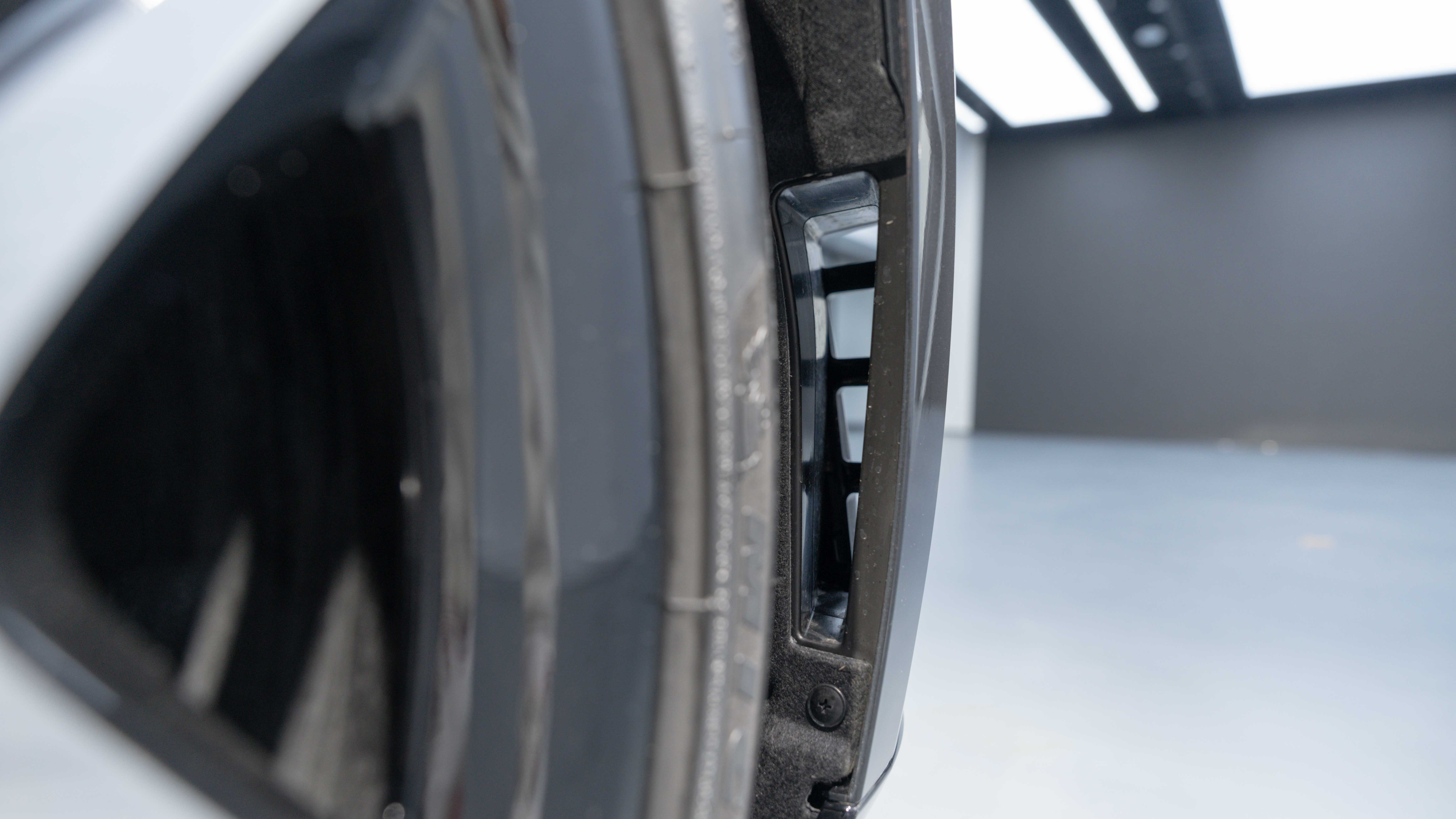
The forward-looking perception camera, like the R7, uses a dual 8 million pixel camera system, and also includes a driving recorder camera.

Due to the limited shooting space in the studio, it was not possible to shoot the side profile of the vehicle inside the studio. Therefore, I found another F7 with a different color outside the studio for everyone to see its side profile.

The three-dimensional size of the F7 is 5,000 × 1,953 × 1,494 mm, with a wheelbase of 3,000 mm, which meets the standards of medium and large-sized sedans. However, from the side, the front of the F7 is not that long. This is because it adopts a design with a short front and long rear overhang and a long wheelbase, which shows that the interior space of the F7 is very spacious.
In addition to its narrow upper and wide lower window-to-body ratio, low wheel arches, and equipped with sporty wheels, the F7’s dynamic posture is not inferior to its sibling, the IM L7.
The version we shot uses 20-inch sporty wheels, and another version is equipped with 19-inch low wind resistance wheels. The sporty wheels use a pentagram shape. What do you think of this wheel design?
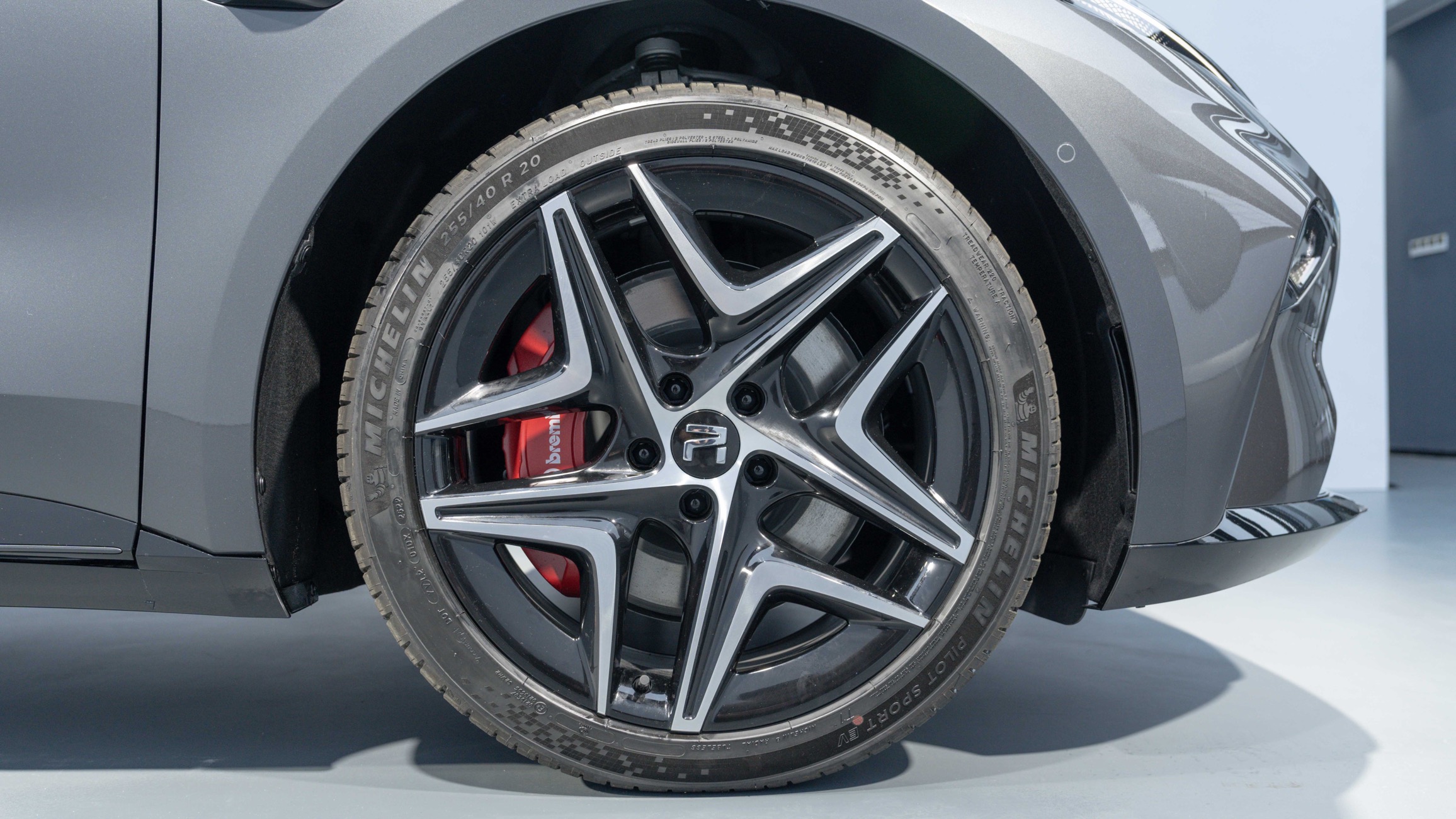
Inside the wheel, the red 4-piston BREMBO calipers are eye-catching. The tires are designed for electric cars and are Michelin PS EV tires with a size of 255/40 R20, which makes me even more excited to test its dynamic driving performance.
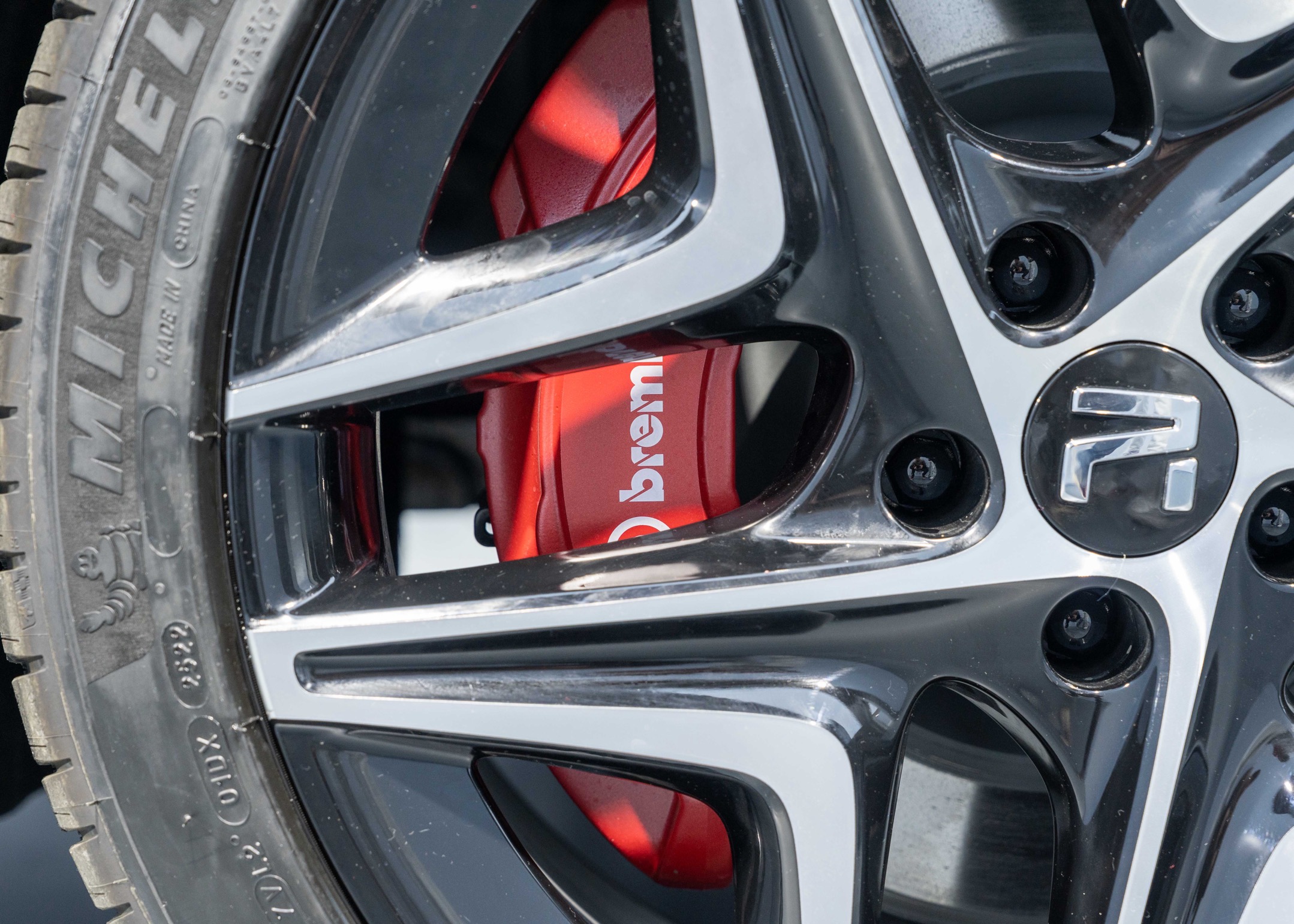
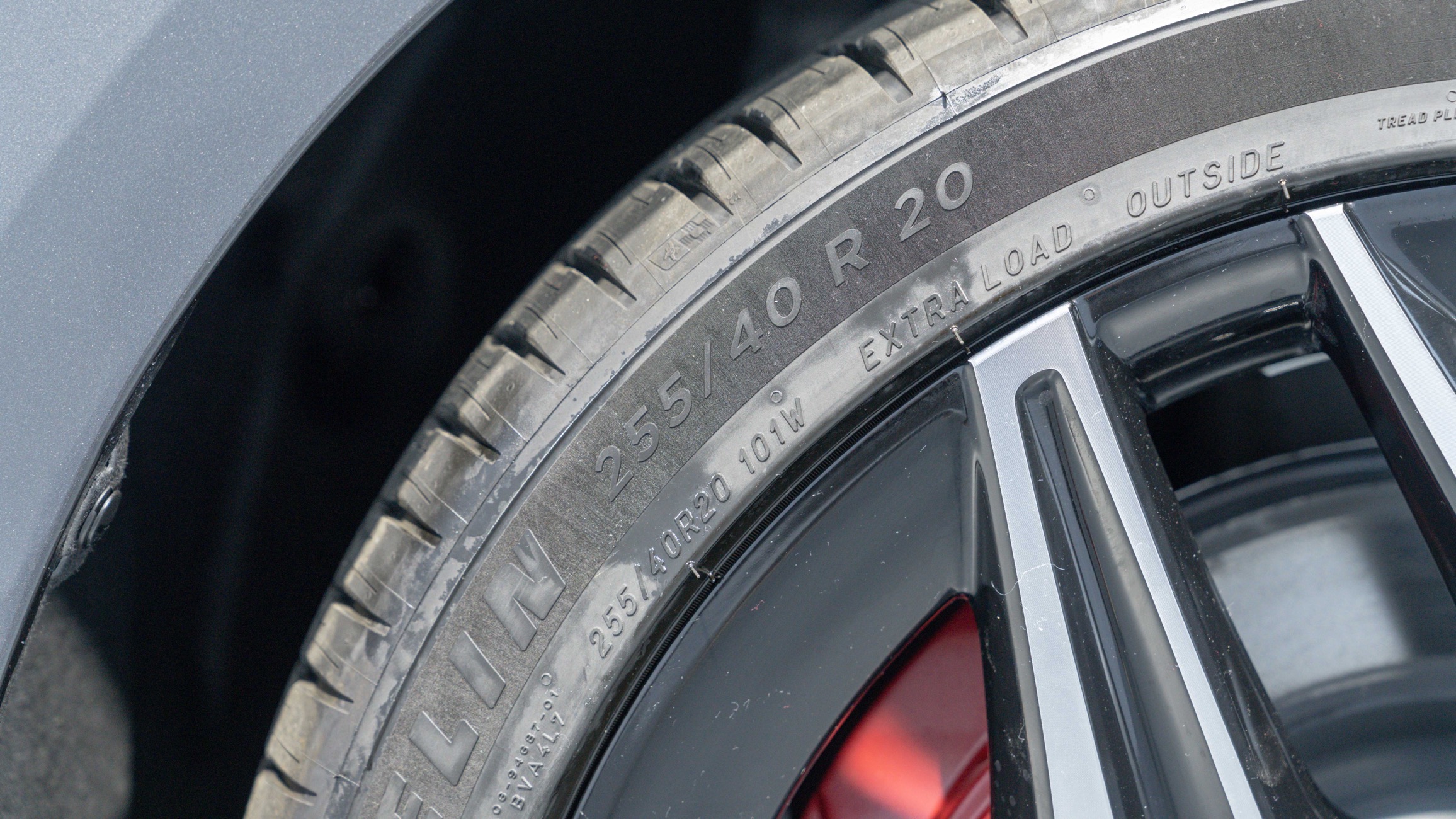
Another obvious feature is the privacy glass used in the rear seats, although it has not been officially announced whether it is standard across the entire line. But there is indeed one thing that is standard——4 electric suction doors and front and rear laminated glass,and the high-end version will also be equipped with front electric doors.
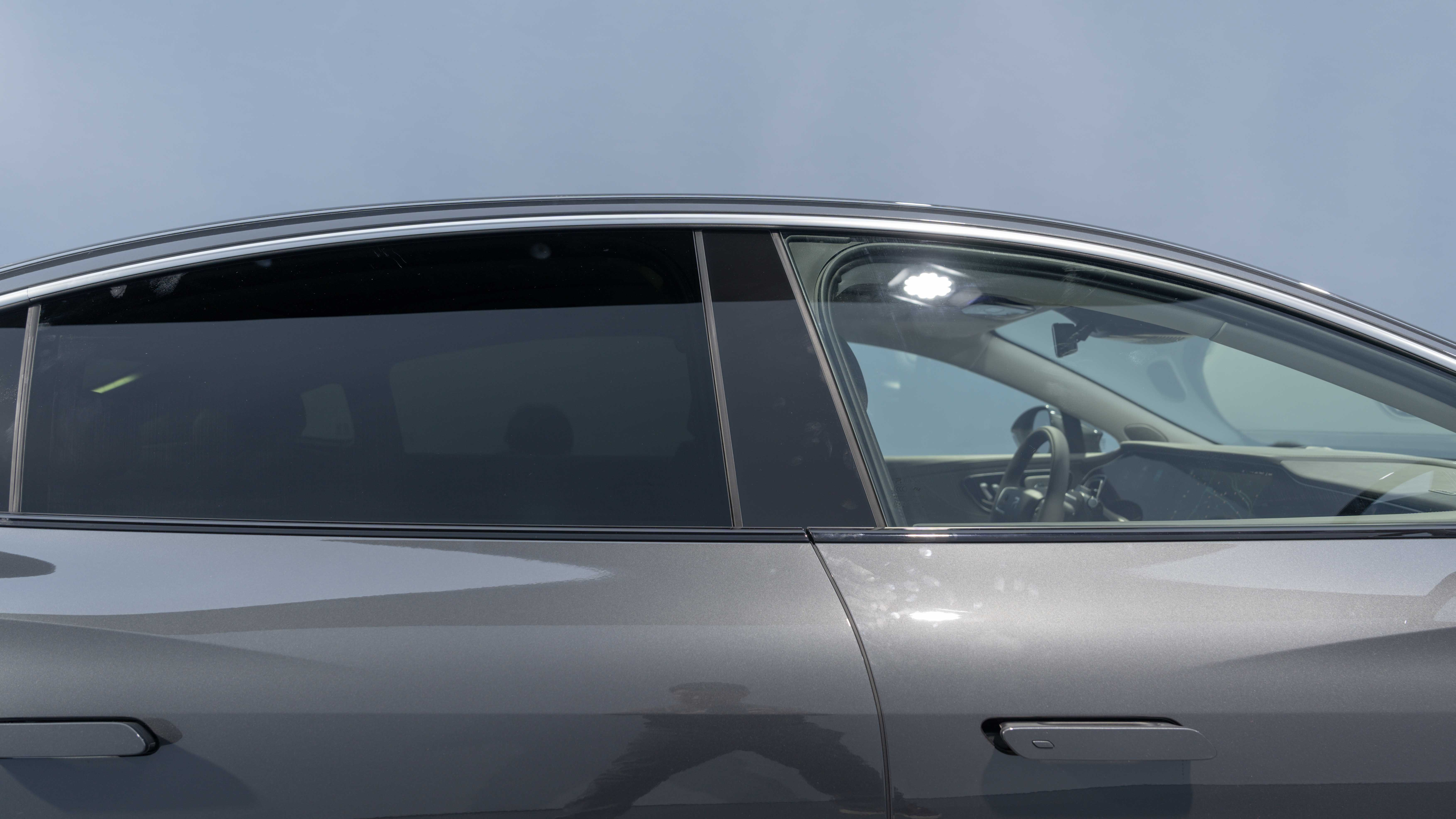
There are 1 surround view camera, 1 side perception camera, and 1 rear perception camera on each side mirror and front fender, all of which are 8 million pixels.

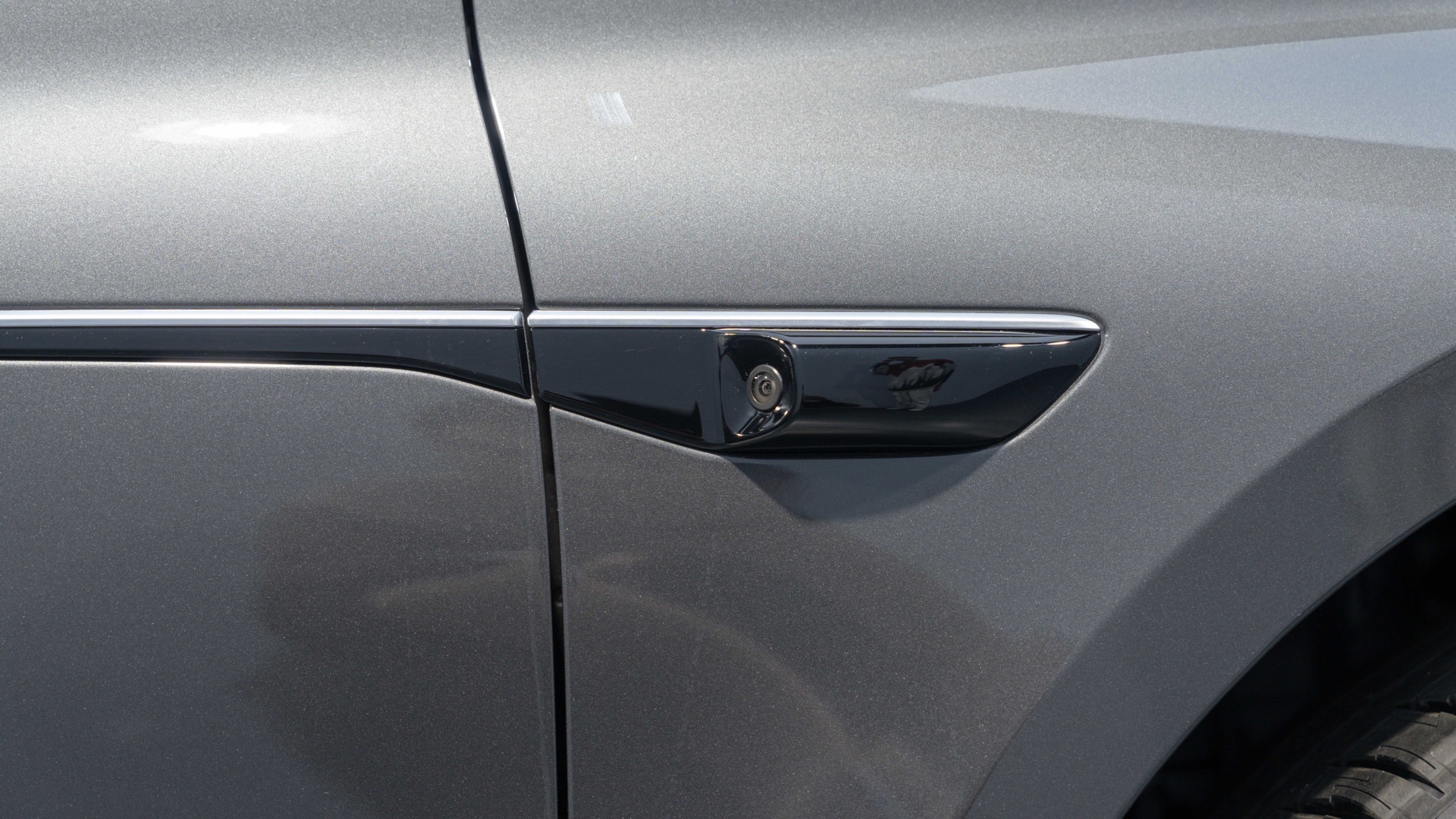
Moving on to the rear, the F7 also uses popular through-type taillights. But what’s different is that the R-shaped logo is used to separate the light strip in the middle, and this R-shaped logo can also light up, making it highly recognizable at night.

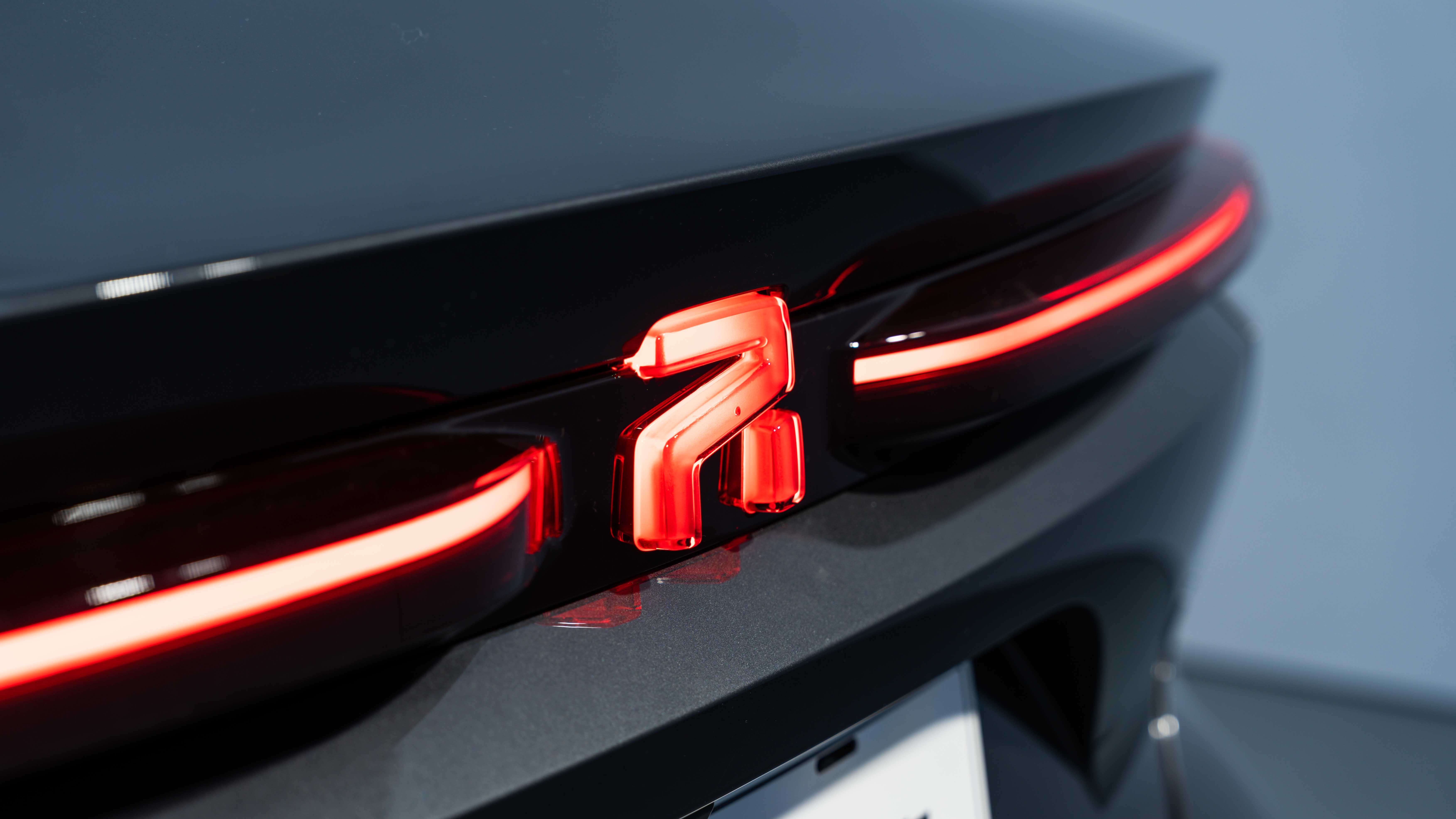
The small duck tail slightly raised at the rear wing is also part of the vehicle’s low wind resistance design.
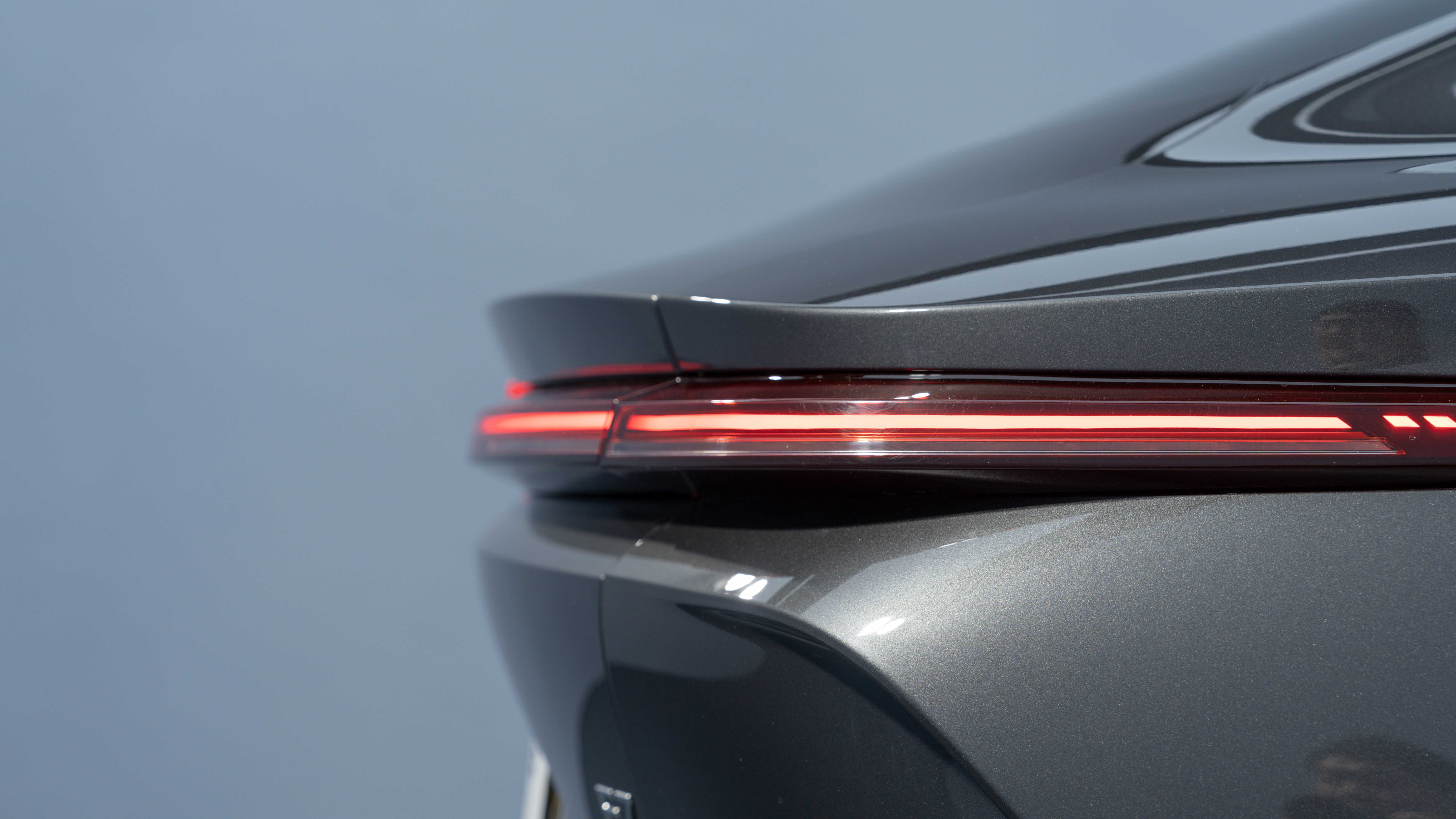
Less common are the air guide vents designed on both sides of the F7 at the rear. Combined with the black diffuser on the bottom, it highlights its sporty attributes in every way.


Above the high-mounted brake light, you can find the last 8 million pixel rear view camera. Obviously, the camera placed in this position will greatly help the vehicle’s rear perception.
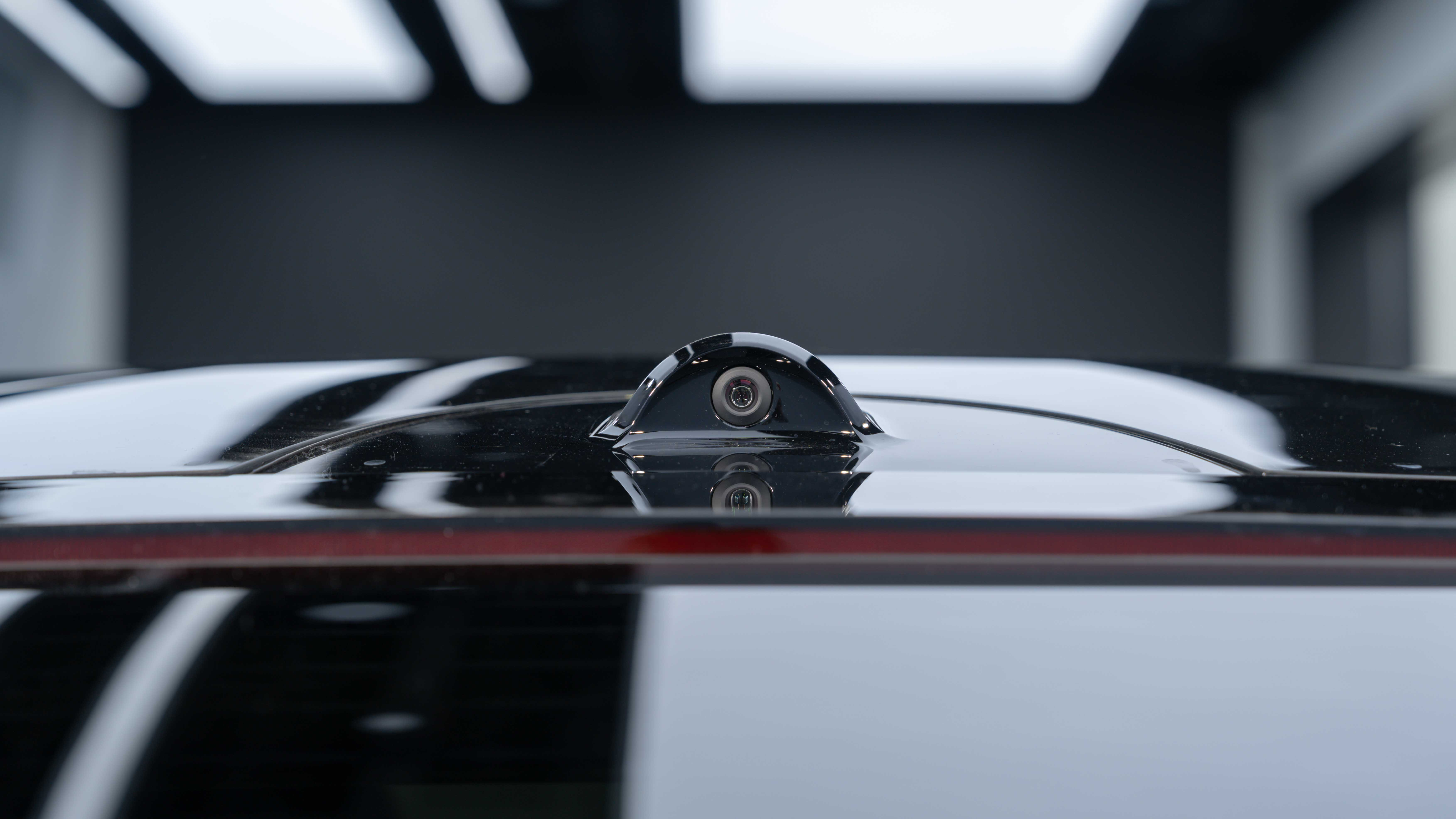
Another significant design improvement is that the F7 uses an electric liftgate design. Although the liftgate may be inconvenient in some lower indoor parking lots, it must be admitted that it looks really cool when opened. The internal storage space is also considerable, and the rear seats can be folded down. In addition, the glass of the liftgate still uses privacy glass.
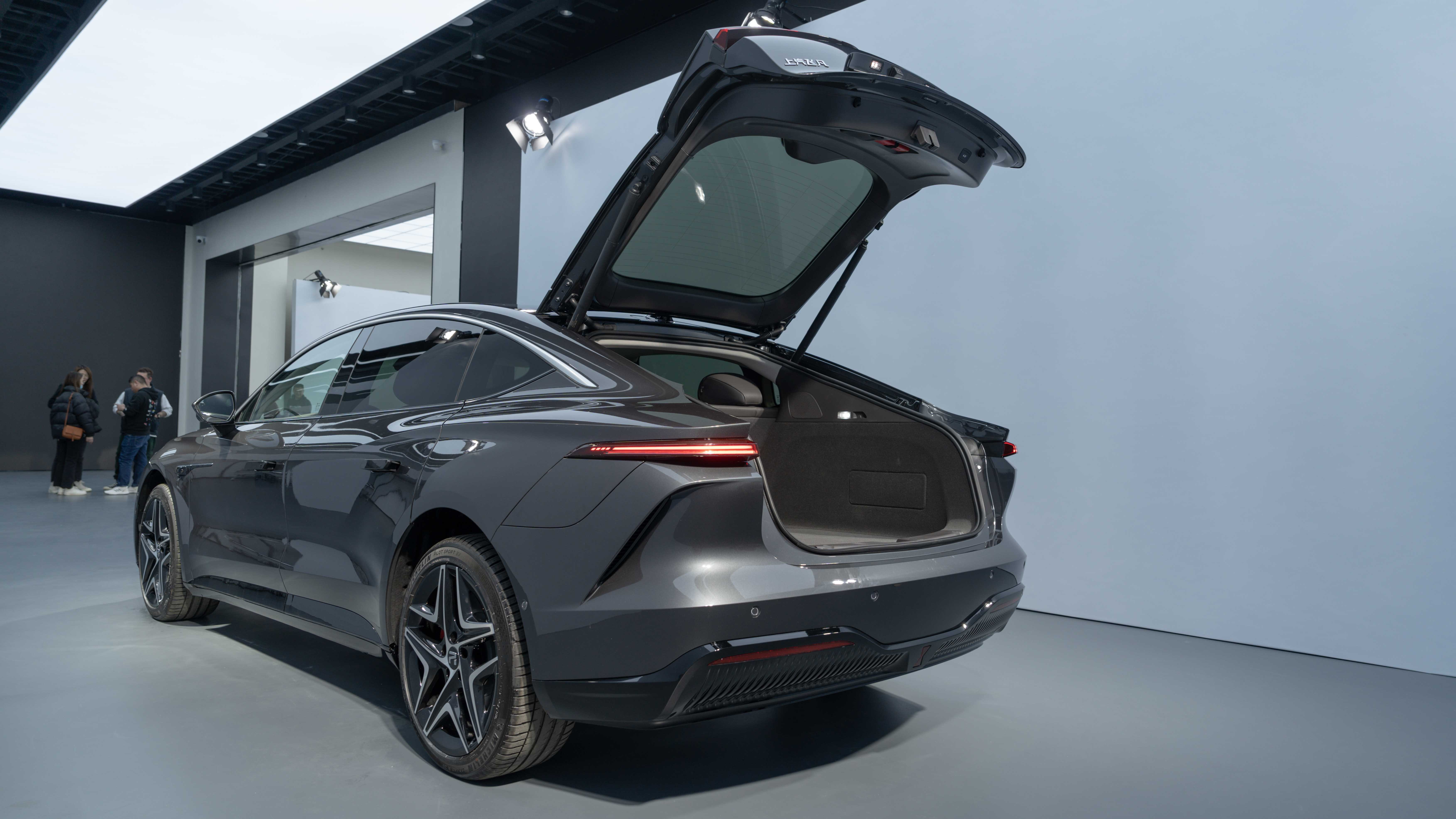
That is all for the exterior part. Now, let’s enter the car and see what changes the F7 interior has compared with the R7.
Interior: Familiar but Surprising
When coming into the car, the most striking thing is the three-display configuration of the same standard as R7. F7 hasn’t canceled this design because it is a sedan, and the 8155 chip can ensure that several screens are smoothly displayed at the same time. In addition, the steering wheel and the central area also adopted a brand-new design.
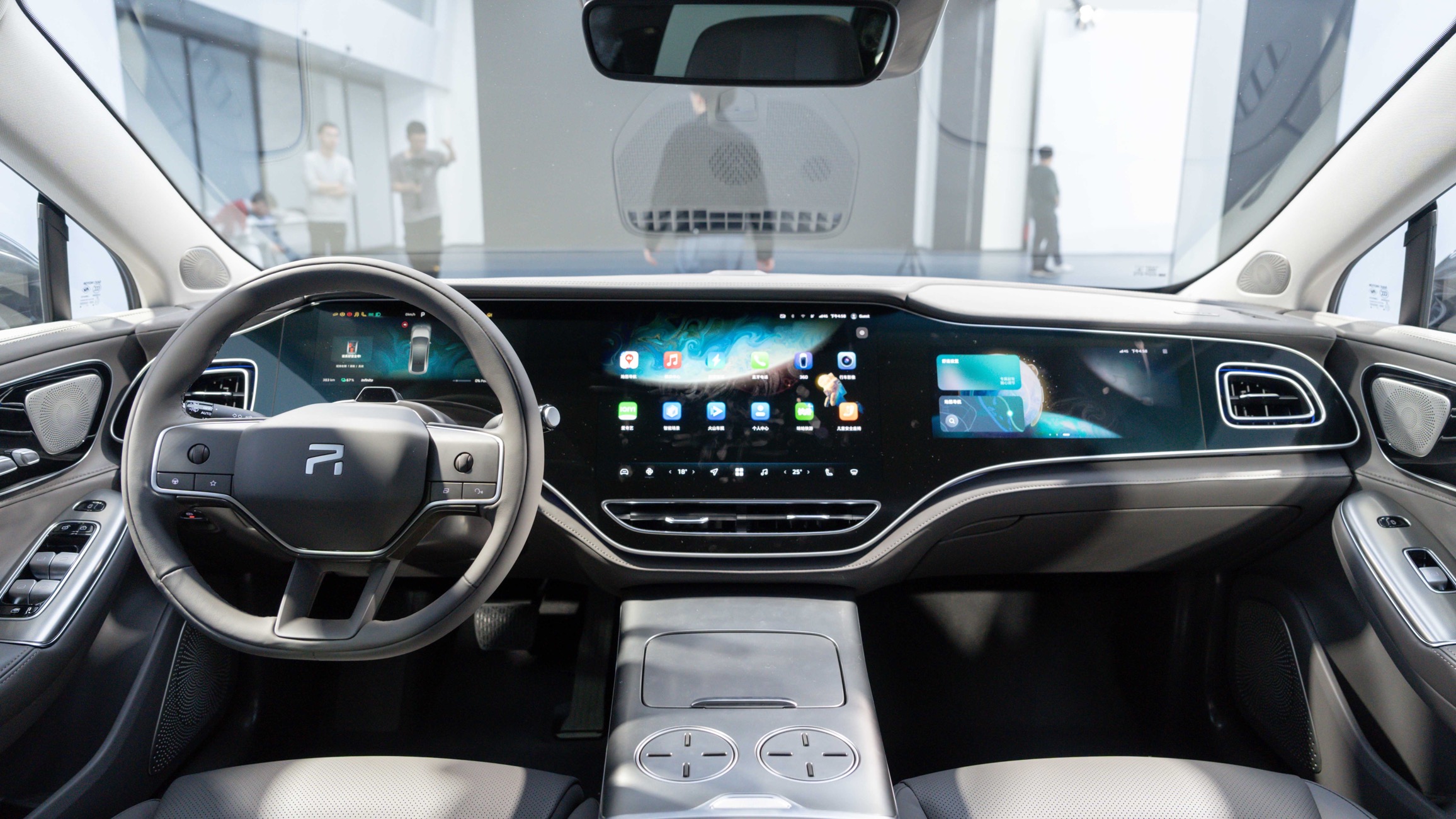
Some R7 users criticized the design of the steering wheel, so the F7 adopted a brand-new three-spoke steering wheel design. Not only is the outside wrapped in leather, but the inner ring of the steering wheel also uses soft skin-friendly material. The steering wheel button layout adopts a new design combining a roller and buttons. Based on my experience, using the roller is more comfortable when adjusting the driving assistance.
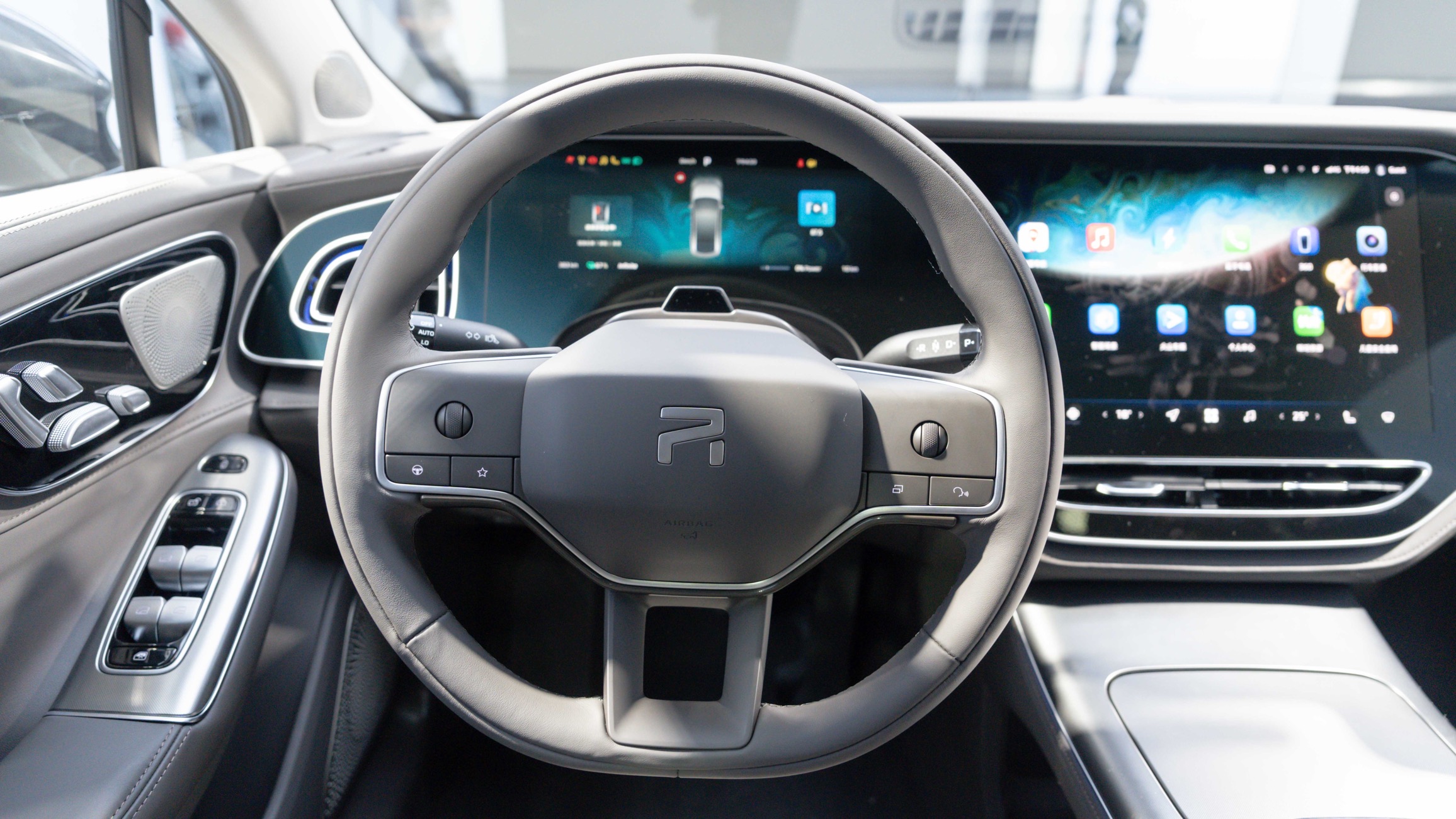
The control for the seat adjustment still places on the door panel, which allows adjusting the seat without moving the body, and supports 14-way electric adjustment.
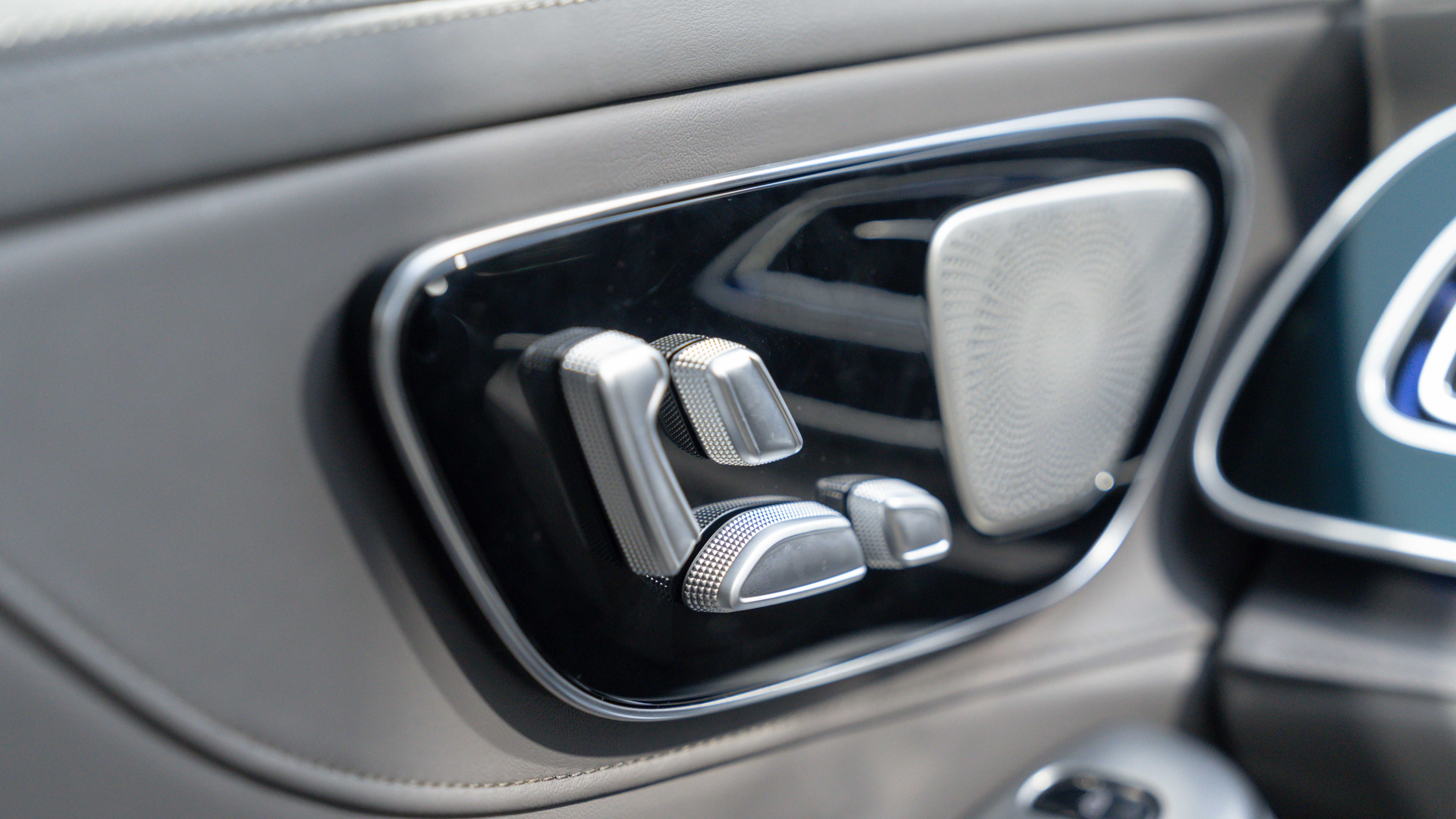
The control buttons on the door panel are exactly the same as those on the R7, and the switch button for the electric door is placed at the front. After getting used to it, opening and closing the door will become very elegant.
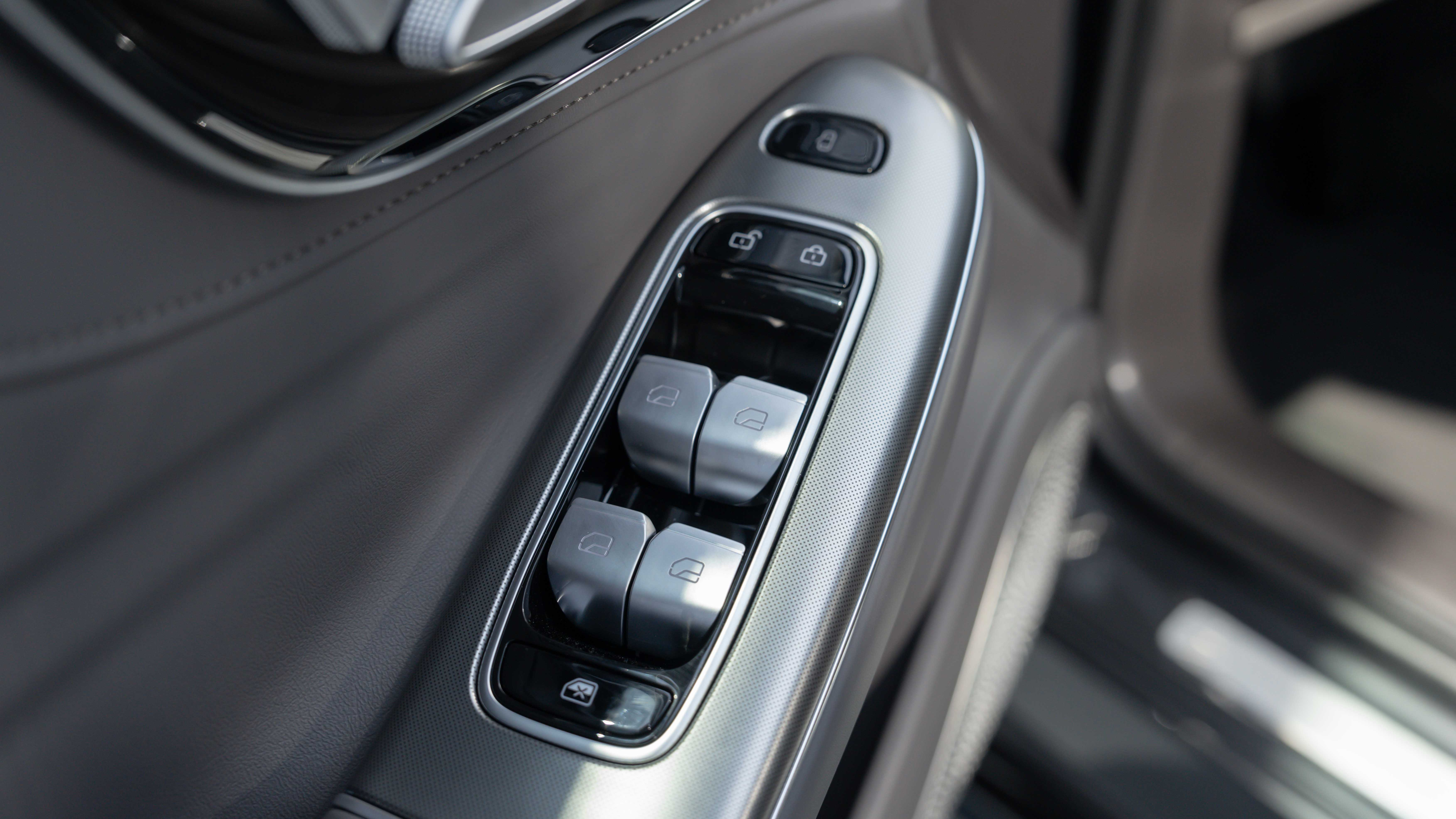
The front seats of F7 are very soft, and the package feeling of the cushion and backrest is good. F7 also equipped the driver’s seat with a hot stone massage function and an extra-long thigh support, effectively relieving the fatigue of long-distance driving.

The driver’s seat is also equipped with a headrest speaker, which will not disturb other passengers in the car when the navigation, music and other sounds are emitted only from the headrest speaker on the driver’s seat.
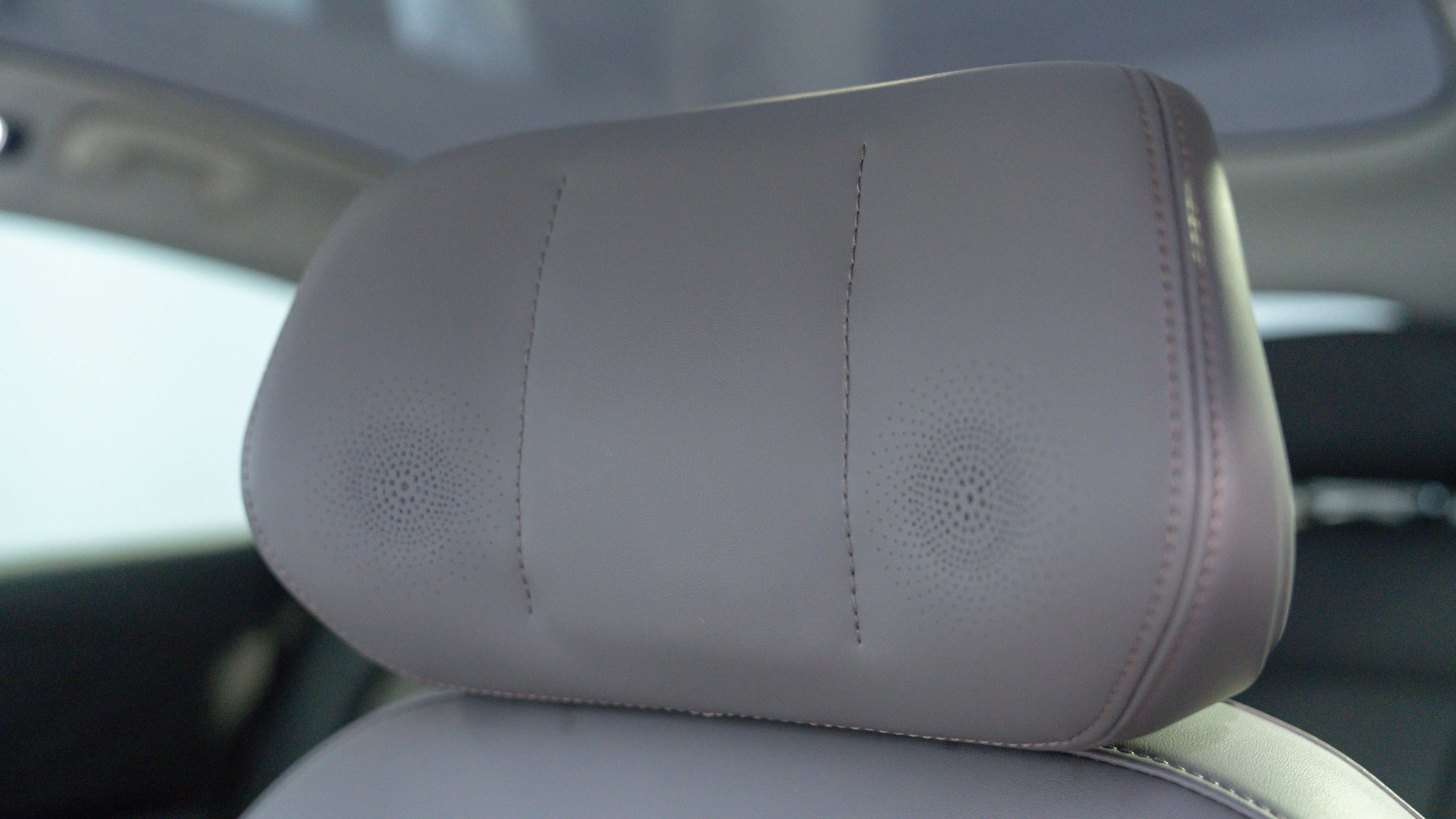
The wireless charging cover in the central area has changed from the flip type of R7 to the push-pull type, and the cup holder has also been redesigned as a lifting cup holder.
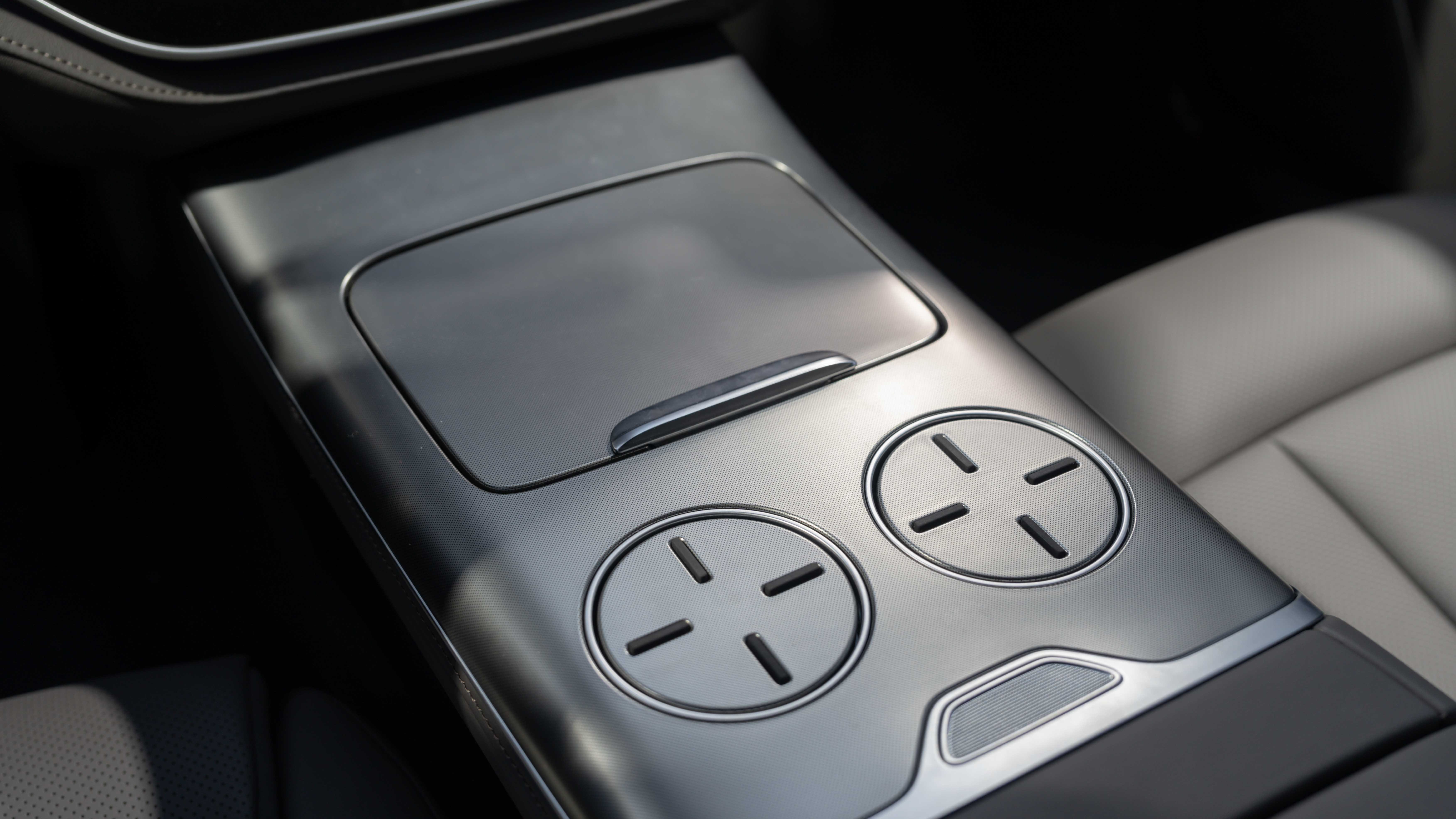
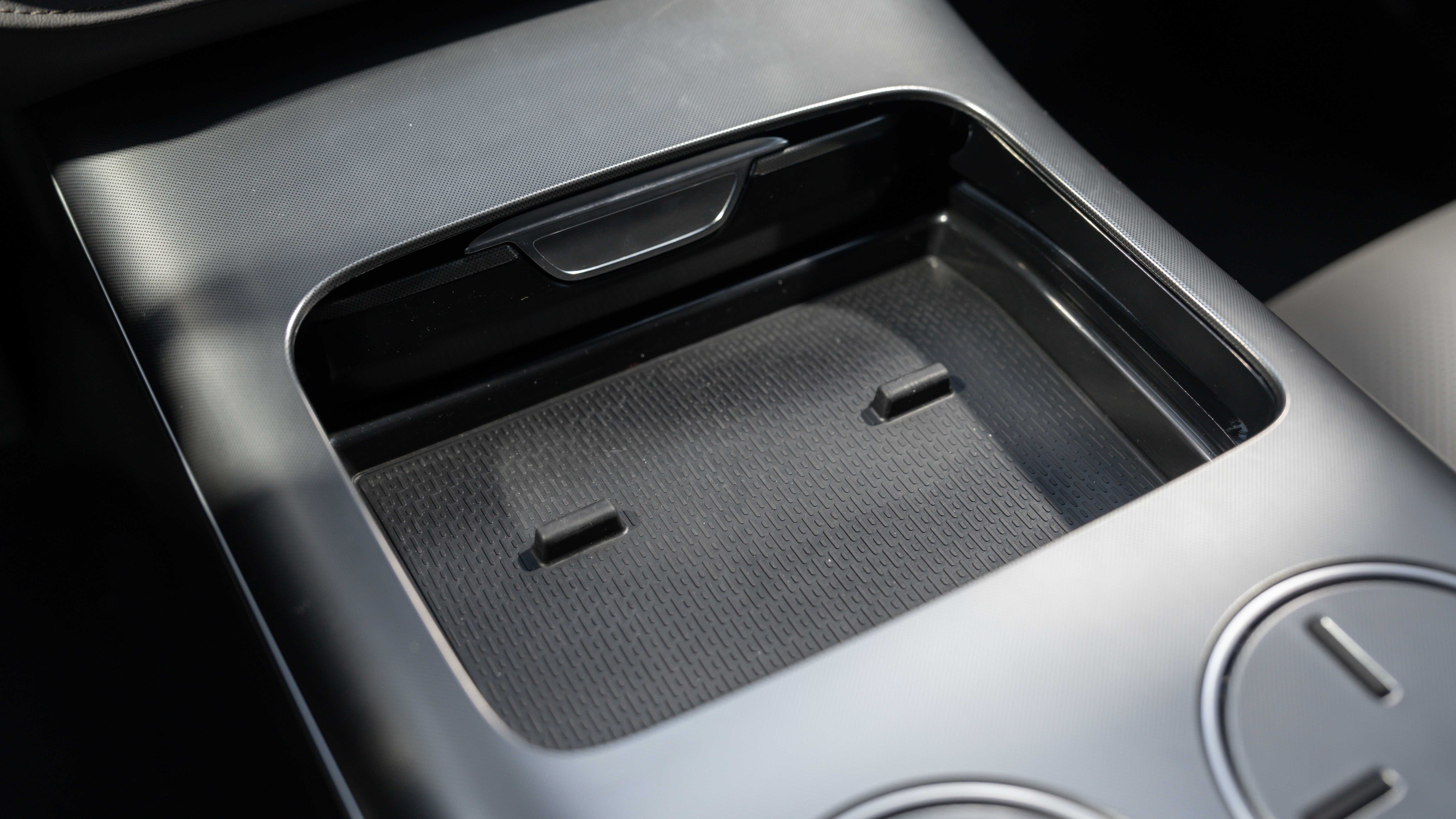
A hollow area is added below the central area, which does not exist on the R7. The size of the space is large enough to hold women’s handbags and high-heeled shoes. The charging ports are also placed here, and the maximum power of the 12V fast charging port is 120W.

Moving to the rear seats, the comfort of the seats on both sides is still very good. The 496mm long cushion is enough to fully support my thighs. In addition, F7 not only supports ventilation and three-stage heating for the front seats, but also for the rear seats.
In addition, the rear seats also support 6-degree electric adjustment of the backrest, and the adjustment buttons are still set on the door panel. You can enjoy the “Ge You lying” position on the rear seats during long trips.

Compared with R7, F7 has added an 8-inch multimedia entertainment screen at the end of the central armrest in the front row. The 3+1 combination of front and rear screens make it even more “screen-dominant” than R7.
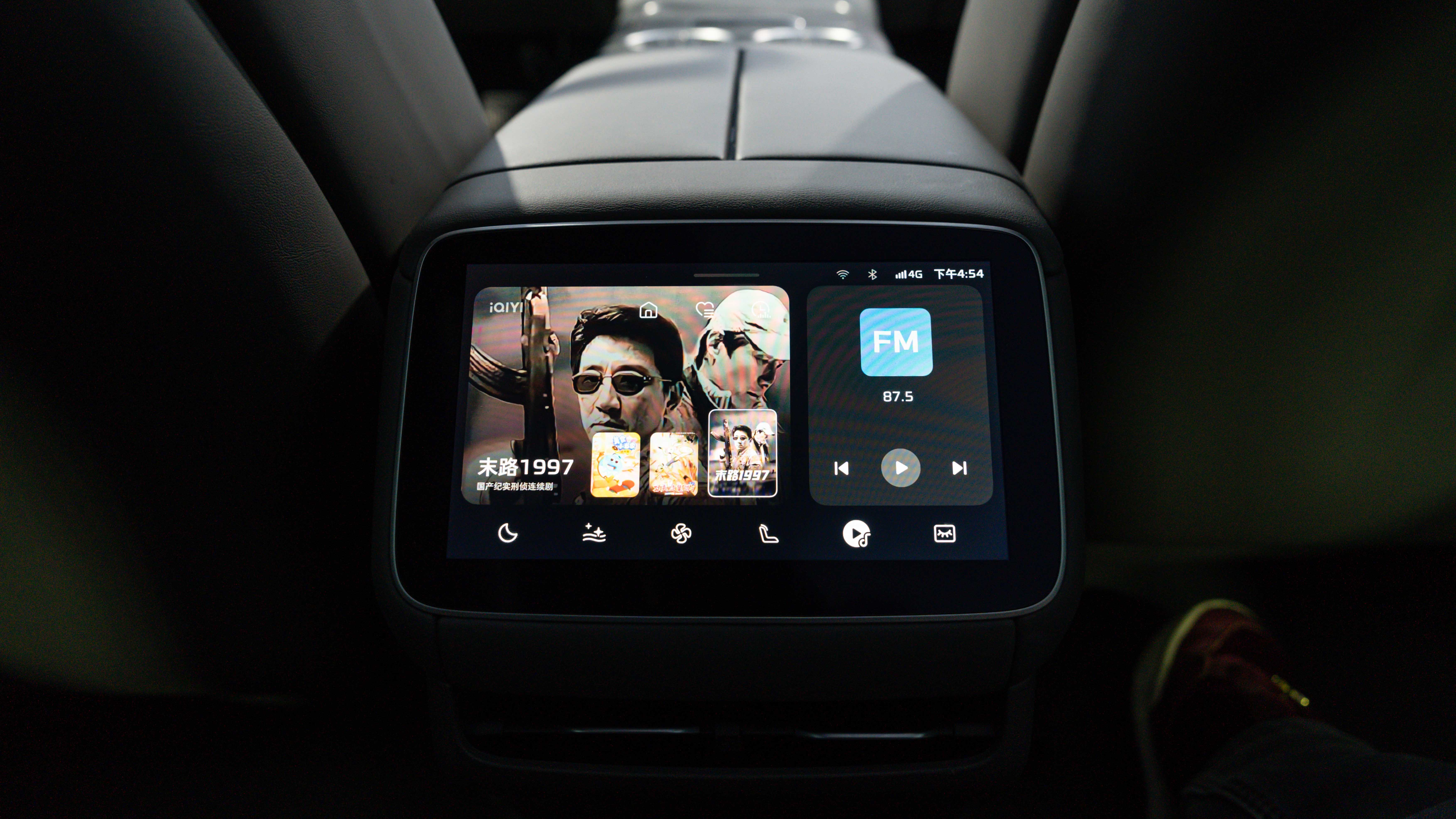
The central armrest in the rear still adopts a lift cup holder design, and a storage area is also set below the central armrest. Although the depth is not large, it is completely capable of holding objects with the thickness of a mobile phone.
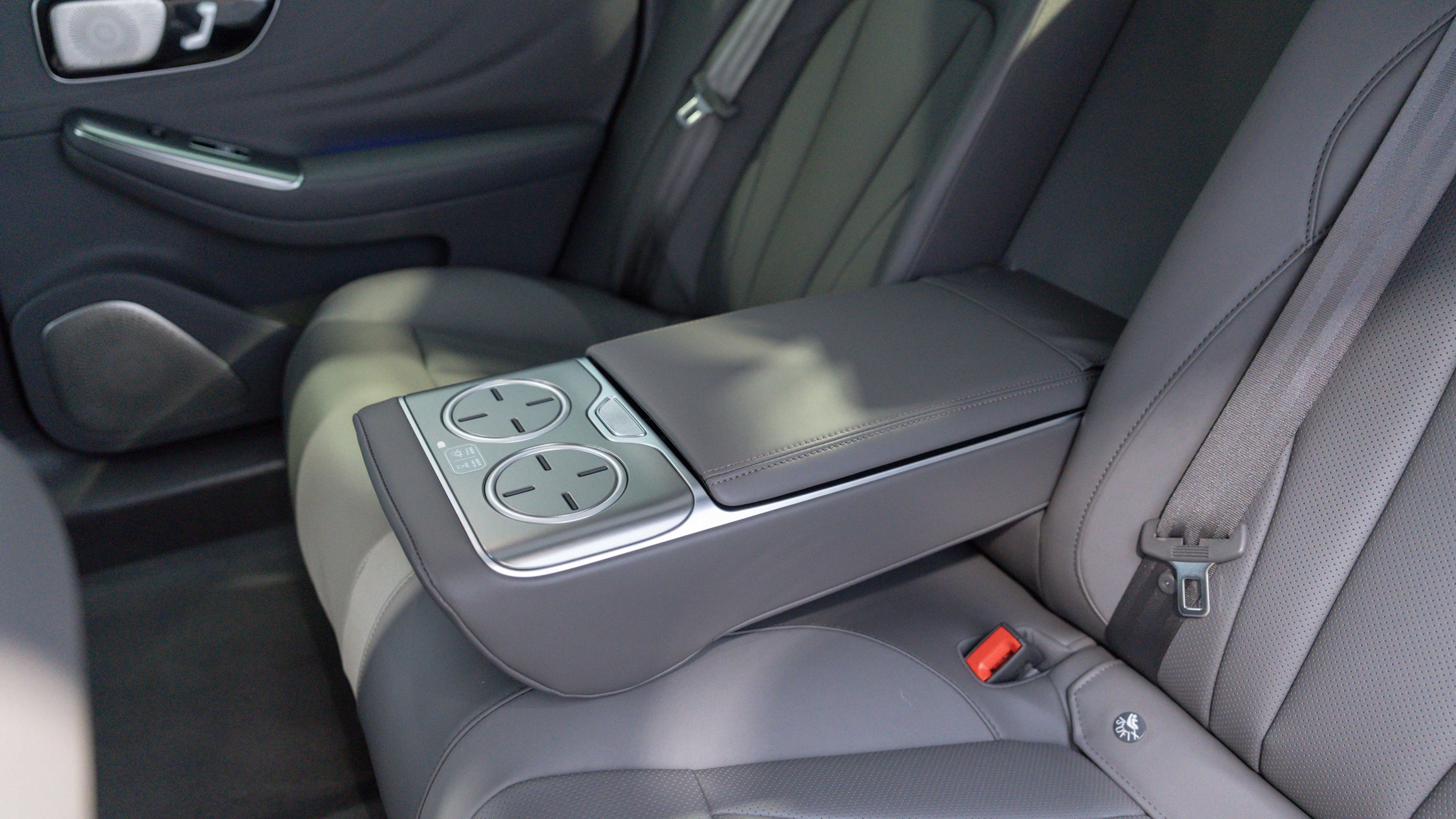
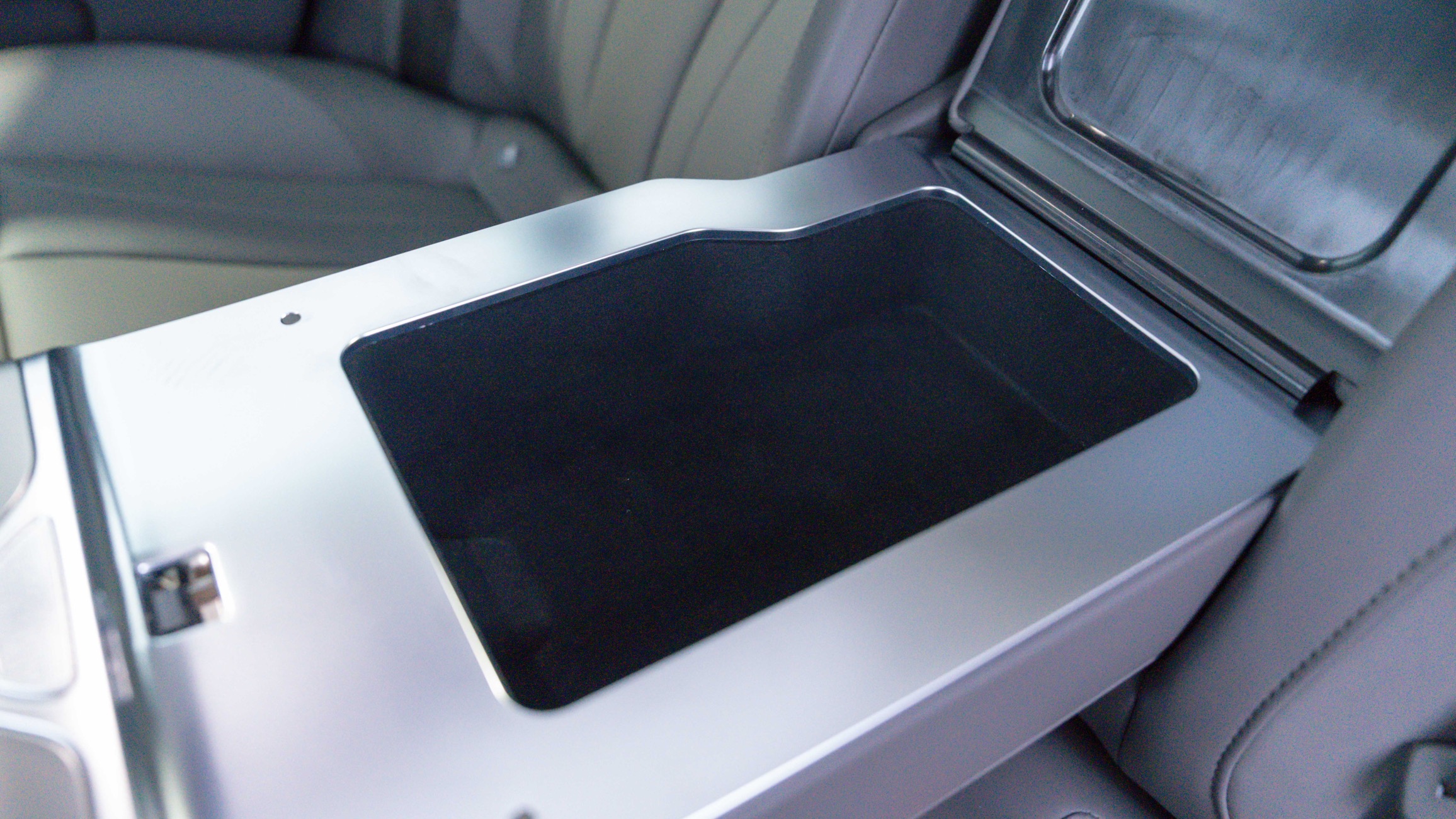
So far, the highlights and differences with R7 of the interior have been introduced. As for other parts of the interior, because the on-site display car is still in the engineering vehicle stage, other parts will not be demonstrated for the time being.
Any other surprises?
This time, the F7 is divided into two versions in terms of power:
- The rear-wheel drive version adopts a single permanent magnet synchronous motor with a maximum power of 250 kW, a maximum torque of 450 N·m, and a hundred kilometers acceleration of 5.7 seconds;
- The four-wheel drive version adopts front and rear double permanent magnet synchronous motors with a maximum power of 400 kW, a maximum torque of 700 N·m, and a hundred kilometers acceleration of 3.7 seconds.
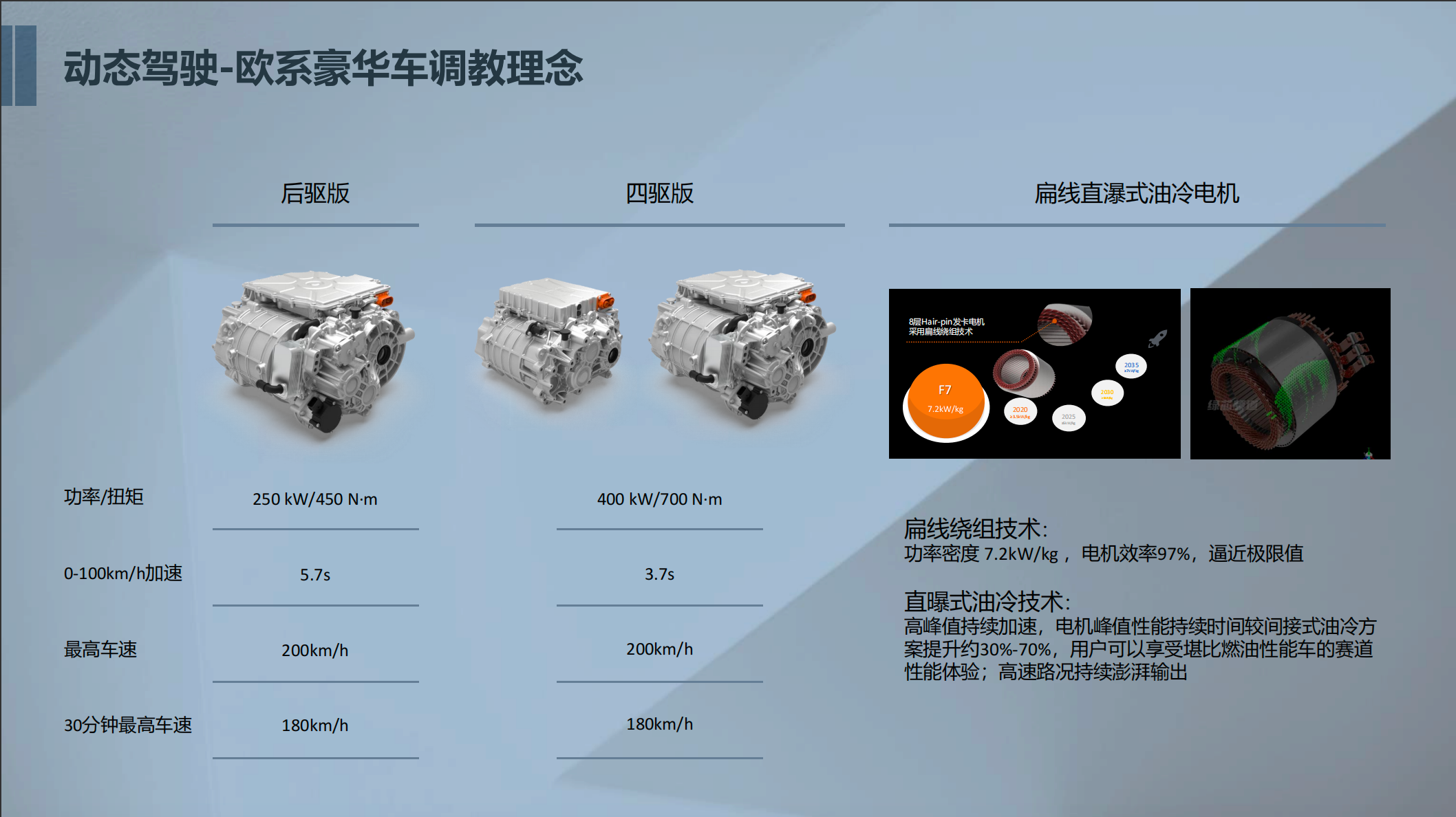
Both cars have a top speed of 200km/h. In addition, the motors of the other two cars use flat wire straight waterfall oil-cooled motors, which have an efficiency of 97%. The oil cooling technology also ensures long-lasting power output capability, providing sustained power output for the vehicle. However, since this is a static experience, the dynamic performance of the RisingAuto F7 still needs to be fully introduced during the next test drive.
The RisingAuto F7’s battery pack also comes in two sizes: 77 kWh and 90 kWh. The thickness of the 90 kWh battery pack is 125 mm, while the thickness of the 77 kWh battery pack is only 110 mm, making it one of the thinnest battery packs currently available. It is precisely because of this that the F7 can keep the seating position as low as possible, unlike some other models.
Combining with the previously given range data by the MIIT, we can infer the following range data of RisingAuto F7’s different models:
- Rear-wheel drive version with 19-inch low-resistance wheels has a CLTC range of 706 km;
- Rear-wheel drive version with 20-inch sport wheels has a CLTC range of 666 km;
- Four-wheel drive version with 20-inch sport wheels has a CLTC range of 576 km;
Like the R7, the F7 also supports 2.5 minutes fast battery swapping, which makes its charging speed much faster than the majority of electric cars. Moreover, RisingAuto F7 is designed to support drivers in not needing to leave their car during the battery swapping process, and can keep using car inside the equipment like the AC. However, there are currently limited battery swapping stations available, so it may take some time to increase the coverage.
The sound system of the F7 uses a 14+2 speaker configuration and also supports “3D directional sound technology”. According to official explanations, navigation prompts, voice assistants, safety prompts, and music all support this technology.When listening to music, the stereoscopic feeling is stronger, and the safety prompt sound has directionality, for example, when pedestrians or obstacles appear in front, the vehicle will immediately issue a prompt from the corresponding position’s speaker, allowing the driver to immediately focus on the corresponding prompt position, instead of looking at the instrument to confirm the alarm information.
Unfortunately, as the display car on site is still in the state of a prototype, we could not experience this sound system this time. We can only tell you about the actual effect next time we experience it.
Finally, let’s talk about assisted driving. The RisingAuto F7 also uses the basic hardware specifications as the R7 for assisted driving, with two schemes, Mobileye and Orin, and the F7 under the Orin scheme is basically in line with the same level of new energy vehicles.
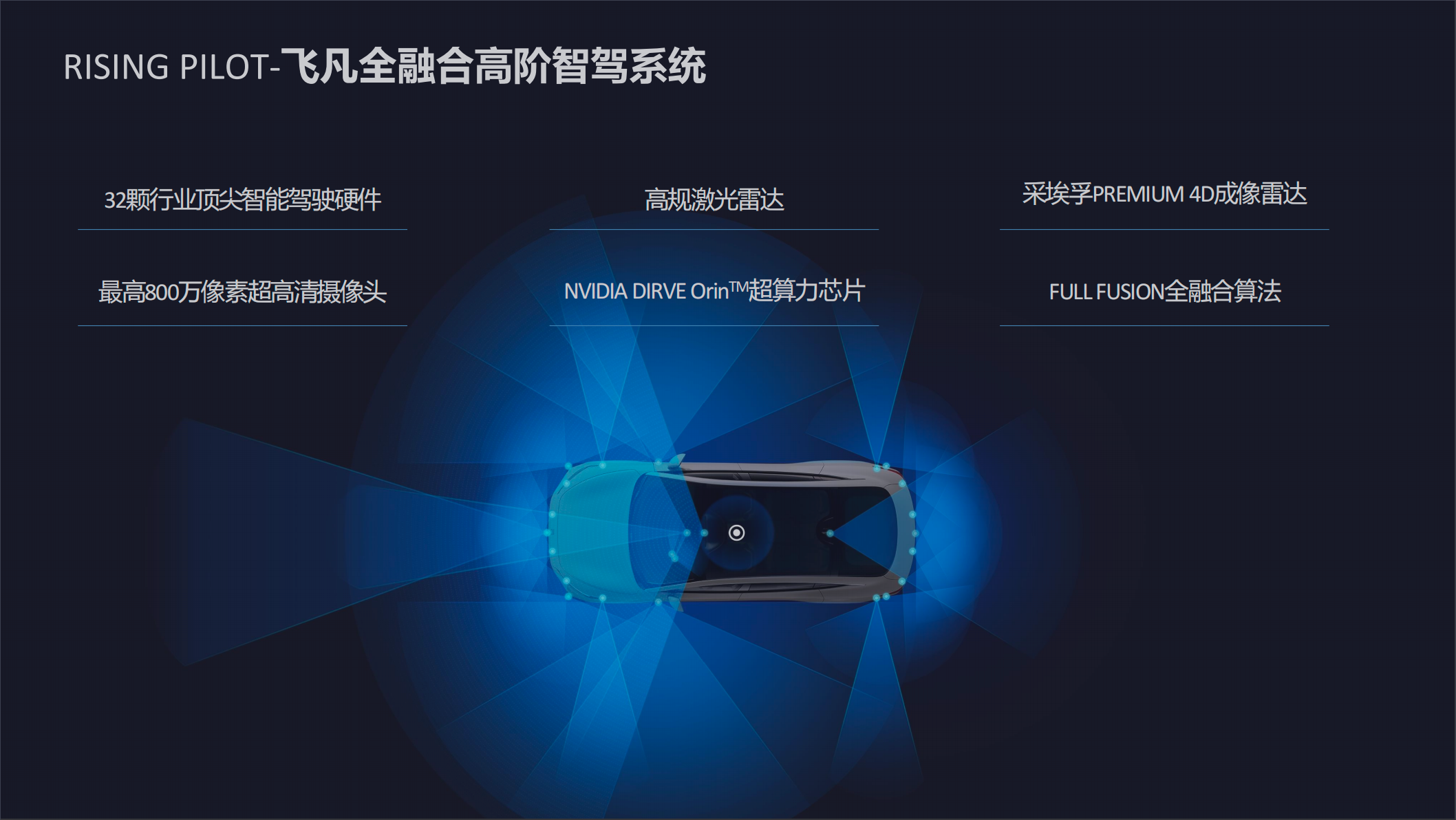
However, there is a small difference from the R7: the F7 does not use backward 4D imaging radar, but a conventional radar configuration. The company stated that this is due to the small role played by the backward 4D radar in actual scenarios.
Epilogue
According to the information revealed by RisingAuto, the pre-sale price of the F7 will be around RMB 280,000 to 350,000. If the RBS vehicle-power separation mode is included, the 77 kWh battery version can have a discount of RMB 84,000, and the 90 kWh battery version will be directly discounted by RMB 100,000. Combined with the price of the R7, the starting price of the F7 is very likely to be less than RMB 200,000!
In addition, during the pre-sale phase, the first non-commercial vehicle owners can also enjoy various privileges, such as a maximum of 1500 kWh of free lifelong charging and battery swapping per year, free use of advanced intelligent driving system, RMB 10,000 optional installation fund, 3 years of free traffic, replacement repurchase policy, low-interest financial plans, and so on.
If the R7 is the “king” of the mid-to-large-size SUV market, then the F7 is the “king” of the mid-to-large-size sedan market. Currently, its cost-effectiveness is really high.
This article is a translation by ChatGPT of a Chinese report from 42HOW. If you have any questions about it, please email bd@42how.com.
